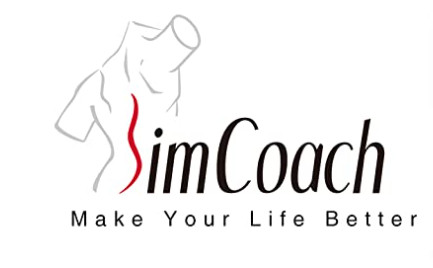Instructions for intravenous injection procedures
Intravenous injection is a common injection technique to deliver drugs into the body through a vein. With this technique, the drug injected into the body will immediately follow the blood vessels throughout the body and diseased organs, but also be eliminated faster than other injection methods.
- Preparation of intravenous technique
1.1. Nursing preparation Routine hand washing according to regulations of the Ministry of Health;
Nurses are fully dressed as prescribed: hat, shirt, gloves;
1.2. Preparing the patient The nurse: visiting the patient, introducing his/her name, working position, title;
Inform and explain to the patient or family about the intravenous injection technique to be performed;
Encourage the patient to rest assured, tell the patient the necessary things before conducting intravenous injection;
Assess the patient’s overall condition;
Check vital signs;
Patient position is appropriate, convenient for intravenous technique.
1.3. Prepare medicine and tools 2 clean rectangular trays, Kocher pliers; Alcohol 70 degrees, cup of iodine, 2 cups of cotton balls; Medicines according to medical orders, syringes and needles suitable for the amount of medicine to be taken, needles for taking drugs; Anti-shock drugs, blood pressure, stethoscope; Pillows, cords, gloves; Aseptic box containing gauze, gauze, and cotton balls; Sharps container, garbage bag.
- What is the angle of intravenous injection?
The patient lies in a comfortable supine position on the bed with arms outstretched, pulls sleeves close to shoulders, exposes injection site, and places patient elbows on thin knees (if intravenous injection is in a flexed position such as elbows). , forearm), pull the patient’s pants up over the knee if the internal ankle vein is to be administered.
To tilt the beveled tip of the needle upwards, insert the needle just through the skin into the vein, the needle is 15 – 300 points above the skin surface, the nurse can also insert the side of the vein, through the skin, and across the vessel wall. and then thread the needle up the vein.
- Intravenous injection procedure
Place the armrest under the injection site. Tie the upper tourniquet about 3-5cm away from the injection site. The knot should not be tied, but the cord should be tied in the style of a bow, the two ends of the rope should be turned upwards for convenience when removing the cord and should not be tied tightly. Remind the patient to clench their fists, stretch in and out a few times to make the veins more prominent. Be prepared to insert the needle into the vein the first time. Disinfect the site of intravenous injection with alcohol iodide in the direction from the inside to the outside, then disinfect with alcohol cotton 700. Disinfect the nurse’s hands with alcohol cotton 700. The left hand uses the thumb to stretch the skin surface to try Stabilize the vein to support displacement and to facilitate percutaneous needle insertion into the vein. The right hand holds the syringe that has been smoked to be injected with the beveled tip facing up, pushing all the air bubbles out. The index finger holds the needle part, the thumb rests on the syringe body; The middle and ring fingers are next to the syringe body, and the little finger is to support the syringe. When the needle is inserted into the vein, the blood will automatically flow into the syringe or rotate the syringe slightly counterclockwise to see the blood flow into the syringe. The left hand gently loosens the string while reminding the patient to relax the hand, at the same time the index finger of the left hand holds the needle bar; thumb on the syringe body; The nurse’s middle, ring, and pinky fingers are kept beside the syringe in place when injecting medication.
Right hand index and middle finger grasp the edge of the syringe, thumb put into the syringe and slowly inject the drug into the vein. If the patient complains of pain and stinging: check the injection site, if it is swollen, the needle has gone out of the blood vessel, readjust the needle by inserting the needle deep into the vessel or withdrawing the needle a little and gently sucking the pump. inject to see if blood is still entering the syringe. If the drug continues to flow in, it means the needle is still in the vein, the pump is not inflated, then slowly continue to inject the drug very slowly, while pumping, monitor the patient’s face and ask if the patient is ok. feel pain, heat or dizziness? If the patient feels very hot and dizzy, the injection should be slowed down or stopped and the doctor informed. When pumping almost all the medicine, it is necessary to withdraw the needle carefully, absolutely do not let air enter the blood vessel, it will cause a blood vessel blockage, which is dangerous to the patient’s life. After injection, withdraw the needle: pull the left thumb to the side and stretch the skin of the injection area so that blood and medicine do not flow out along the needle. Re-sterilize the injection site with alcohol-soaked cotton, put alcohol on the injection site and keep it for a few seconds; Do not ask the patient to flex the arm. Have the patient lie down in a comfortable position. Clean up tools.
- Intravenous injection technique for people receiving fluids
Practicing intravenous injection technique when the patient is infusion should pay attention to:
No need to tie the gauze cord, but pay attention to lock the infusion. Insert the needle into the infusion line ambu after disinfecting the ambu tip. Pump out the medicine, withdraw the needle, disinfect the ambu tip of the infusion line. Unlock for the fluid to flow as prescribed by the doctor.

